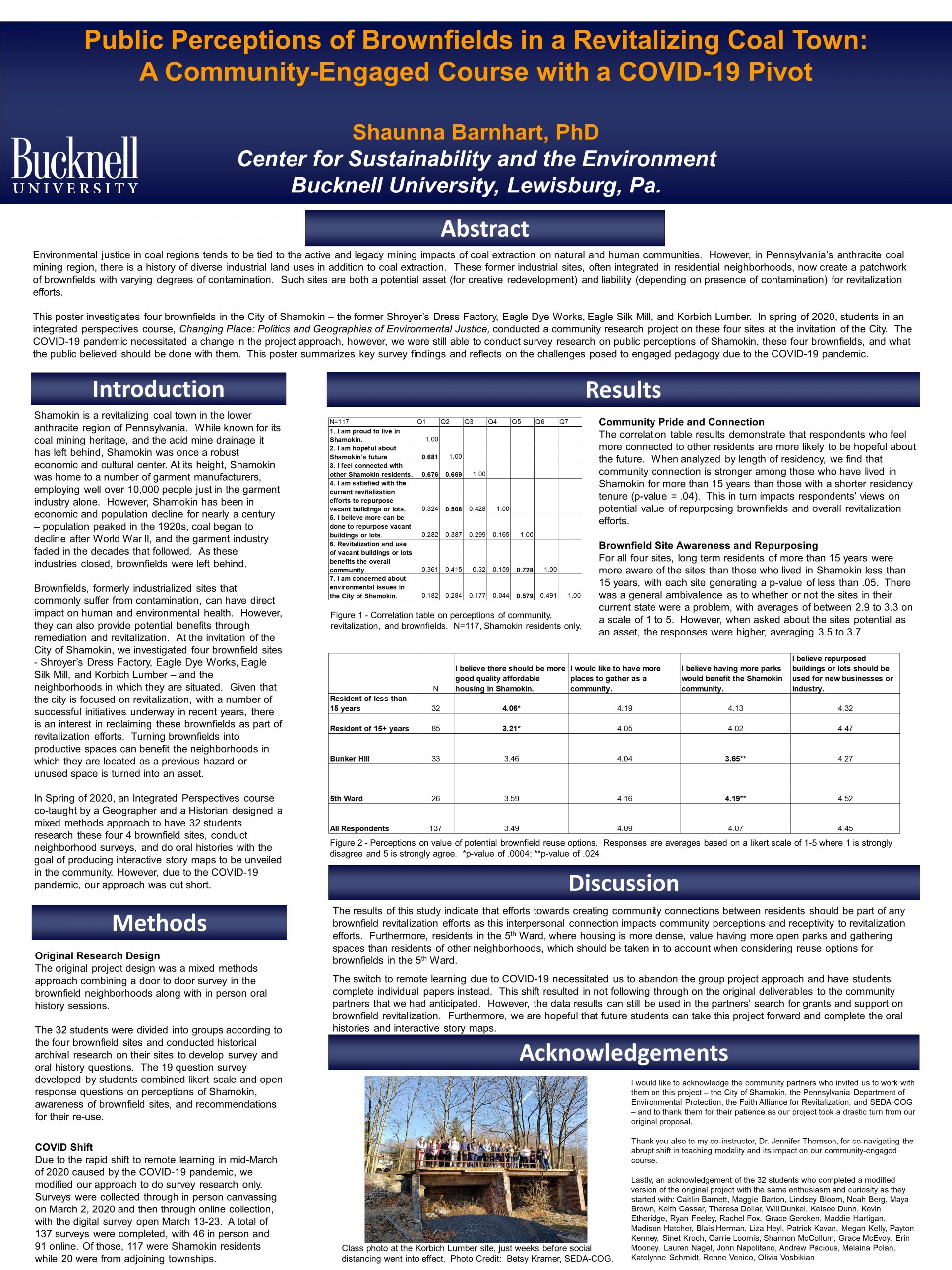Author:
Shaunna Barnhart
Co-Authors:
Institution:
Bucknell University
Abstract
Environmental justice in coal regions tends to be tied to the active and legacy mining impacts of coal extraction on natural and human communities. However, in Pennsylvania’s anthracite coal mining region, there is a history of diverse industrial land uses in addition to coal extraction. These former industrial sites, often integrated in residential neighborhoods, now create a patchwork of brownfields with varying degrees of contamination. Such sites are both a potential asset (for creative redevelopment) and liability (depending on presence of contamination) for revitalization efforts.
This poster investigates four brownfields in the City of Shamokin – the former Shroyer’s Dress Factory, Eagle Dye Works, Eagle Silk Mill, and Korbich Lumber. In spring of 2020, students in an integrated perspectives course, Changing Place: Politics and Geographies of Environmental Justice, conducted a community research project on these four sites at the invitation of the City. The COVID-19 pandemic necessitated a change in the project approach, however, we were still able to conduct survey research on public perceptions of Shamokin, these four brownfields, and what the public believed should be done with them. This poster summarizes key survey findings and reflects on the challenges posed to engaged pedagogy due to the COVID-19 pandemic.
